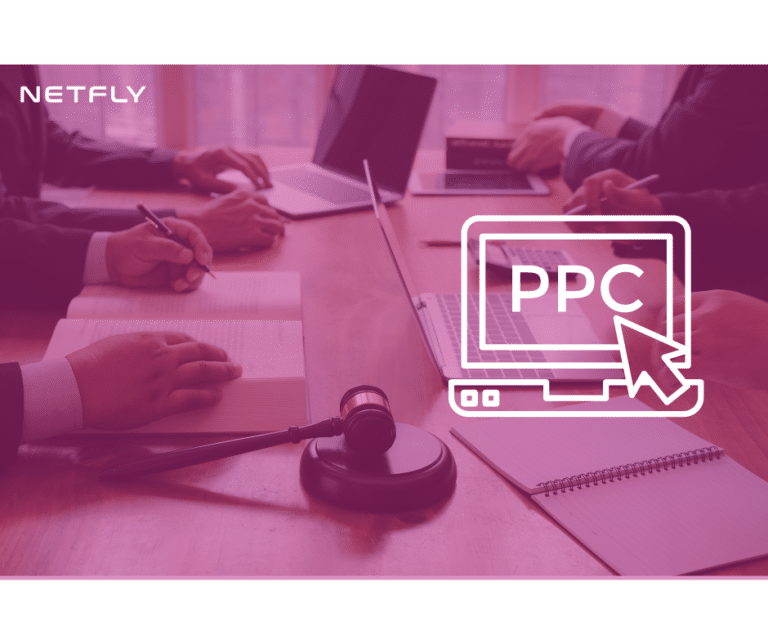By delving into user behaviors and utilizing data-driven insights, you can uncover hidden opportunities to enhance your website’s performance and drive more conversions. The impact of user-centric strategies cannot be overstated, and the potential for growth lies within your grasp as you explore the power of leveraging user insights to propel your law firm’s conversion rates to new heights.
Key Takeaways
- Implement user testing methodologies to gather valuable data on audience interactions.
- Analyze user behavior patterns to optimize user experience and increase conversions.
- Utilize data-driven decisions to tailor marketing strategies effectively.
- Focus on understanding user engagement and feedback to address client needs.
- Enhance website usability through continuous improvement strategies for higher conversion rates.
Understanding User Behavior
Understanding user behavior is essential for law firms aiming to tailor their marketing strategies effectively to attract and retain clients. User engagement analysis plays an important role in deciphering how potential clients interact with a law firm’s online platforms. By delving deep into user engagement metrics such as bounce rates, time spent on pages, and click-through rates, law firms can gain valuable insights into what resonates with their audience and what areas may need improvement. This analysis enables law firms to make data-driven decisions to optimize their website and digital marketing campaigns for better user engagement and ultimately higher conversion rates.
Moreover, behavior pattern recognition is another critical aspect of understanding user behavior. By identifying recurring patterns in how users navigate through a law firm’s website, which pages they frequent the most, and where they tend to drop off, law firms can tailor their content and design to better cater to their audience’s preferences. Recognizing these behavior patterns allows law firms to create a more user-friendly experience, leading to increased engagement and conversions.
Importance of User Testing
User testing is essential for understanding how your audience interacts with your website or product.
By utilizing various testing methodologies, you can gather valuable data that informs data-driven decisions.
This process helps you optimize user experience, leading to improved conversions and overall success.
Testing Methodologies
When implementing specialized marketing strategies for Tier-1 law firms, employing rigorous testing methodologies is paramount to optimizing conversions and enhancing user experiences.
Usability testing techniques and user feedback analysis provide invaluable insights into how users interact with your law firm’s digital platforms. By conducting thorough conversion rate analysis and utilizing behavior tracking techniques, you can pinpoint areas for improvement and refine your strategies effectively.
Testing methodologies allow you to understand user behavior, preferences, and pain points, enabling you to make data-driven decisions that resonate with your target audience. Incorporating these methodologies into your marketing approach can lead to significant enhancements in conversion rates and overall user satisfaction, ultimately propelling your law firm towards greater success.
Data-Driven Decisions
To optimize your marketing strategies effectively for Tier-1 law firms, leveraging data-driven decisions through user testing is essential for achieving substantial improvements in conversion rates and user satisfaction.
User engagement plays a pivotal role in shaping your marketing approach. By analyzing behavioral insights gathered from user testing, you can tailor your strategies to resonate more effectively with your target audience.
Understanding how users interact with your website, content, and services allows you to make informed decisions that enhance user experience and drive conversions.
Data-driven decisions based on user testing not only improve your conversion rates but also foster long-term relationships with clients by delivering a more personalized and engaging experience.
Implementing Conversion Analysis
To kick off the discussion on implementing conversion analysis, consider delving into data-driven insights implementation and conversion rate optimization strategies.
By focusing on utilizing data to drive decisions and refining conversion processes, you can pinpoint areas for improvement and enhance overall performance.
Implementing these strategies can lead to more informed decision-making and ultimately boost conversion rates effectively.
Data-Driven Insights Implementation
Implementing conversion analysis through data-driven insights enhances your law firm’s marketing strategies by providing valuable insights into user behavior and preferences.
By analyzing user engagement metrics such as click-through rates, bounce rates, and time spent on pages, you can identify areas for improvement in your conversion optimization efforts.
Data-driven insights help you understand which aspects of your website or marketing campaigns are resonating with your audience and which ones may need adjustments.
Utilizing tools like Google Analytics or heatmaps allows you to track user interactions, gather meaningful data, and make informed decisions to optimize your conversion rates.
Incorporating these insights into your strategy can lead to more effective marketing campaigns and ultimately higher conversion rates for your law firm.
Conversion Rate Optimization Strategies
By analyzing user behavior and preferences through data-driven insights, your law firm can strategically enhance its conversion rate optimization strategies. Understanding user engagement is essential for effective conversion optimization.
Start by evaluating how users interact with your website, pinpointing areas where they may drop off or encounter obstacles. Implement A/B testing to compare different versions of your landing pages or forms, focusing on elements that drive conversions.
Utilize heatmaps and click tracking to visualize user interactions and identify optimization opportunities. Personalize user experiences based on their preferences and behavior to increase conversion rates.
Continuously monitor and analyze user feedback to adapt and refine your conversion strategies for maximum effectiveness.
Leveraging Data Insights
When exploring the domain of specialized marketing strategies for tier-1 law firms, harnessing data insights emerges as a pivotal element in driving rapid and scalable growth. By leveraging data insights, you can gain a profound understanding of user engagement and behavior analysis on your law firm’s digital platforms.
User engagement data provides valuable insights into how visitors interact with your website, indicating which elements are resonating with them and which areas may need improvement. Analyzing user engagement metrics such as time spent on pages, click-through rates, and bounce rates can help you tailor your website to better meet the needs and preferences of your target audience.
Behavior analysis, on the other hand, investigates deeper into understanding why users behave the way they do on your site. By tracking user behavior through tools like heatmaps, session recordings, and conversion funnels, you can pinpoint pain points in the user journey, identify areas of friction, and optimize the overall user experience.
Utilizing data insights effectively allows you to make informed decisions backed by concrete evidence rather than relying on assumptions. By continuously monitoring and analyzing user engagement and behavior data, you can refine your marketing strategies, enhance user experience, and ultimately boost conversion rates for your law firm.
Optimizing User Experience
To enhance user engagement and conversion rates effectively, optimizing the overall user experience on your law firm’s digital platforms is vital. User engagement plays a pivotal role in driving conversions, making it essential to focus on providing a seamless and intuitive experience for visitors. Start by ensuring that your website is visually appealing, easy to navigate, and provides clear calls-to-action.
Conversion optimization hinges on understanding user behavior and preferences. Conduct thorough research to identify pain points in the user journey and address them proactively. Implement responsive design elements to cater to users accessing your site from various devices, ensuring a consistent experience across all platforms. Streamline the conversion process by minimizing form fields and simplifying the checkout process for potential clients.
Personalization is key to enhancing user engagement. Tailor your content to resonate with your target audience, addressing their specific needs and concerns. Utilize data analytics to gain insights into user interactions and adjust your strategies accordingly to boost conversions. Regularly solicit feedback from users to identify areas for improvement and make data-driven decisions to enhance the overall user experience continually.
A/B Testing Strategies
When contemplating A/B testing strategies, it’s crucial to test variations effectively to discern user preferences.
Analyzing user behavior during these tests can provide valuable insights into what resonates with your audience.
Test Variations Effectively
For optimizing conversion rates through A/B testing, delving into effective test variations is essential in refining marketing strategies for Tier-1 law firms seeking rapid growth.
When conducting A/B tests, consider utilizing usability testing insights to drive meaningful changes. Start by identifying key elements on your law firm’s website that directly impact conversions.
Test variations in headlines, call-to-action buttons, or form lengths to determine what resonates best with your audience. Implement conversion optimization techniques such as simplifying forms, enhancing visual appeal, or adjusting messaging to align with your target market’s preferences.
Analyze the data meticulously to draw actionable conclusions that can inform future marketing decisions. By strategically testing variations, you can uncover valuable insights that lead to significant improvements in conversion rates.
Analyze User Behavior
By analyzing user behavior through A/B testing strategies, you can gain valuable insights into how your audience interacts with your law firm’s digital assets, allowing for data-driven optimization of conversion rates. A/B testing involves comparing two versions of a webpage or app to see which performs better with users.
This method enables you to understand user engagement patterns and preferences by presenting variations in design, content, or functionality. By carefully analyzing user behavior metrics such as click-through rates, bounce rates, and conversion rates, you can pinpoint areas for improvement and refine your digital assets to enhance user experience and boost conversion rates.
Behavior analysis through A/B testing empowers you to make informed decisions based on real user interactions, leading to more effective digital marketing strategies.
Optimize Conversion Rates
Analyzing user behavior through A/B testing provides invaluable insights into how your audience interacts with your law firm’s digital assets, facilitating data-driven optimization of conversion rates.
By conducting A/B tests, you can experiment with different elements on your website to see which versions resonate best with users. Utilize user feedback to understand their preferences and pain points, then tailor your conversion pathways accordingly.
Test variations in call-to-action buttons, form lengths, or content layouts to determine the most effective design. Track and analyze user responses to different versions to identify which elements drive the highest conversions.
A systematic approach to A/B testing can help you fine-tune your digital presence for peak performance and increased conversion rates.
User Feedback Integration
Incorporating user feedback into your marketing strategies can greatly enhance your understanding of client needs and preferences. User engagement plays an essential role in this process, as it provides direct insight into how your audience perceives your law firm’s services and offerings. By actively listening to feedback and analyzing it effectively, you can uncover valuable information that can guide your conversion rate optimization efforts.
Feedback analysis is a vital component of user feedback integration. It involves systematically reviewing and interpreting the feedback received from clients, whether it’s through surveys, reviews, or direct communication. By categorizing feedback based on common themes or issues raised by users, you can identify patterns and trends that highlight areas for improvement in your conversion strategies.
Moreover, user feedback integration enables you to address pain points and concerns that may be hindering conversions. By leveraging insights gained from client feedback, you can tailor your marketing messages and strategies to better resonate with your target audience, ultimately increasing conversion rates. Remember, user feedback is a goldmine of information that, when effectively integrated into your marketing approach, can have a significant impact on the success of your law firm’s conversion optimization efforts.
Conversion Rate Metrics
When evaluating Conversion Rate Metrics, you’ll focus on key indicators that reveal how users interact with your website.
Analyzing user behavior helps identify bottlenecks and areas for improvement in the conversion process.
Key Conversion Metrics
Understanding key conversion metrics is essential for law firms aiming for rapid and scalable growth in their marketing strategies. User engagement plays an important role in conversion tracking, measuring how effectively your audience interacts with your website or ads.
Conversion rate, the percentage of visitors who complete a desired action, indicates the effectiveness of your marketing efforts. Click-through rate (CTR) reveals how many users click on a specific link, providing insights into the appeal of your content.
Cost per acquisition (CPA) helps evaluate the cost-effectiveness of acquiring a new client. By analyzing these key metrics, law firms can optimize their strategies to enhance conversions and drive business growth.
Analyzing User Behavior
To effectively analyze user behavior and conversion rate metrics, explore the data-driven insights derived from user interactions on your website. Delve into the world of user engagement and behavioral analysis to uncover valuable information that can propel your law firm towards increased conversions.
Here are some key points to take into account:
- Evaluate user journey maps to understand the paths visitors take on your site.
- Utilize heatmaps to identify hotspots and areas of high user activity.
- Conduct A/B testing to compare different website versions and optimize for conversions.
- Analyze click-through rates and bounce rates to gauge user interest and interaction levels effectively.
Optimizing Conversion Paths
Enhance your law firm’s conversion rates by strategically optimizing the paths that lead users towards valuable actions on your website. User engagement plays a critical role in guiding visitors through these conversion paths.
To improve user engagement, focus on creating clear and intuitive navigation, compelling calls-to-action, and personalized content that resonates with your audience.
Conversion optimization involves continuously analyzing user behavior to identify bottlenecks or areas for improvement in the conversion paths. By A/B testing different elements, such as forms, buttons, or messaging, you can refine the path to conversions.
Identifying Conversion Barriers
In pinpointing the obstacles that hinder conversions, a critical examination of user behavior and interaction patterns is paramount for refining marketing strategies.
- Unclear Call-to-Actions: Ambiguous or buried CTAs can confuse users, leading to missed conversion opportunities.
- Lengthy Forms: Extensive forms may deter users from completing the conversion process due to time constraints or information overload.
- Lack of Trust Signals: Absence of trust indicators like testimonials, security badges, or client logos can undermine user confidence in your services.
- Poor Page Load Speed: Slow-loading pages frustrate users and increase bounce rates, diminishing conversion prospects.
User Journey Mapping
Analyzing user journey mapping reveals important touchpoints and potential conversion bottlenecks in your marketing funnel. By understanding the stages your potential clients go through from initial contact to conversion, you can optimize their journey for improved user engagement and enhanced customer experience.
User journey mapping allows you to visualize the steps a user takes when interacting with your law firm, from the first website visit to contacting your office. This process provides insights into user behavior, preferences, and pain points throughout their experience. By identifying key touchpoints where users may drop off or encounter obstacles, you can thoroughly explore these issues to streamline the journey and increase conversion rates.
Effective user journey mapping goes beyond plotting out a linear path; it examines the emotions, motivations, and decision-making processes of your potential clients. By capturing these nuances, you can tailor your marketing strategies to better resonate with your target audience, fostering stronger connections and building trust along the way.
Moreover, user journey mapping enables you to align your website, content, and communication channels to create a cohesive and seamless experience for users. By optimizing each touchpoint for clarity, relevance, and ease of use, you can enhance the overall customer experience and guide visitors towards conversion with greater efficiency.
Website Usability Enhancements
Optimizing your law firm’s website for improved user experience is paramount for increasing conversions and enhancing client engagement. To achieve this, consider the following key points:
- Usability Testing Benefits: Conducting usability tests allows you to gather invaluable insights into how users interact with your website. By observing real users exploring your site, you can identify pain points, areas of confusion, and opportunities for improvement.
- User Experience Enhancement: Enhancing the user experience involves making your website intuitive, easy to navigate, and visually appealing. By streamlining the user journey, you can guide visitors towards conversion points more effectively.
- Responsive Design Implementation: Make sure your website is responsive across various devices to cater to the needs of mobile users. A seamless experience on smartphones and tablets can have a significant impact on user satisfaction and conversion rates.
- Accessibility Considerations: Make your website accessible to all users, including those with disabilities. Implement features such as alt text for images, clear headings, and keyboard navigation to enhance usability for all visitors.
Implementing these usability enhancements based on testing and analysis can lead to a more user-friendly website, ultimately improving conversions and fostering better client engagement.
Call-to-Action Optimization
To enhance the effectiveness of your law firm’s website and drive desired actions from visitors, strategic optimization of call-to-action elements is essential. Conversion optimization hinges on compelling users to take specific actions, and this is where a well-crafted call-to-action plays a pivotal role. By leveraging user insights, you can tailor your call-to-action buttons and messages to resonate with your audience and prompt them to convert.
User insights provide valuable data on user behavior, preferences, and pain points, which can be instrumental in optimizing your call-to-action strategy. Analyzing user interactions can offer critical information on what motivates users to take action and what elements of a call-to-action draw their attention. By incorporating these insights, you can refine the design, placement, and messaging of your call-to-action to maximize its impact on conversion rates.
When optimizing your call-to-action, consider factors such as clarity, urgency, relevance, and visibility. A clear and concise call-to-action that conveys a sense of urgency and aligns with the user’s needs is more likely to drive conversions. Additionally, ensuring that the call-to-action is prominently displayed on your website and stands out from other elements can further enhance its effectiveness in prompting user action.
Mobile Responsiveness Evaluation
Improving your law firm’s website for peak performance on mobile devices involves a thorough evaluation of its responsiveness to guarantee seamless user experiences across various screen sizes. When evaluating your website’s mobile responsiveness, consider the following:
- Responsive Design: Make sure that your website layout adapts fluidly to different screen sizes, maintaining functionality and visual appeal.
- Usability Testing: Perform testing to assess how easily users can navigate your site on mobile devices, identifying any pain points or areas for improvement.
- Page Loading Speed: Optimize your website for quick loading times on mobile devices to prevent user frustration and high bounce rates.
- Mobile-Friendly Content: Customize your content to be easily readable and engaging on smaller screens, keeping users interested and on your site longer.
Responsive design plays an important role in capturing and retaining mobile users’ attention. Usability testing allows you to uncover any obstacles users may face when interacting with your site on mobile, helping you make informed decisions for enhancements.
Conversion Funnel Analysis
Analyzing your law firm’s conversion funnel thoroughly is essential for understanding the effectiveness of your marketing strategies and identifying potential areas for enhancement. By delving into the conversion funnel, you gain valuable insights into user engagement and conversion metrics that can greatly impact your firm’s success.
User engagement plays a pivotal role in the conversion funnel analysis. Understanding how users interact with your website at each stage of the funnel provides vital data on their behavior, preferences, and pain points. By tracking user engagement metrics such as bounce rates, time on page, and click-through rates, you can pinpoint areas that may be causing friction and hindering conversions.
Conversion insights derived from the funnel analysis offer a detailed view of your marketing efforts’ performance. By examining conversion rates, drop-off points, and conversion paths, you can identify strengths and weaknesses in your funnel. This data enables you to make data-driven decisions to optimize key touchpoints, streamline the user journey, and ultimately boost conversions.
Incorporating user engagement and conversion insights into your conversion funnel analysis empowers you to refine your marketing strategies, enhance user experience, and drive higher conversion rates for your law firm. Taking a proactive approach to analyzing and optimizing your conversion funnel is essential for staying competitive in today’s digital landscape.
Continuous Improvement Strategies
In refining your law firm’s marketing strategies, a systematic approach to iteratively enhancing user experience and conversion rates is paramount for sustained success. To continuously improve your conversion rates, consider the following strategies:
- Invest in User Engagement: Actively engage with your users through personalized content, interactive features, and responsive customer service to build trust and loyalty.
- Utilize Conversion Insights: Analyze conversion data regularly to identify trends, pain points, and opportunities for optimization, allowing you to make data-driven decisions.
- Implement A/B Testing: Conduct experiments to compare different versions of your website, emails, or ads to determine which elements lead to higher conversion rates.
- Seek Feedback and Adapt: Encourage user feedback through surveys, reviews, and usability tests to understand user preferences and tailor your strategies accordingly.
Frequently Asked Questions
How Can User Testing Impact a Law Firm’s Brand Perception?
The way clients interact with your services and the overall feel of your firm’s online presence can have a substantial impact on how your brand is perceived.
What Are the Common Pitfalls to Avoid During User Feedback Integration?
Avoid biases by objectively analyzing data. Implement changes based on concrete evidence rather than personal preferences.
By steering clear of assumptions and ensuring feedback is diverse and representative, you can enhance the effectiveness of your strategies. Pay attention to patterns and trends, prioritizing adjustments that address overarching issues.
This approach fosters continuous improvement and optimizes your processes for better outcomes.
Is There a Correlation Between Website Usability and Conversion Rates?
When your website is user-friendly, conversions soar. Enhanced usability boosts engagement, leading to a seamless user experience that compels visitors to act. A well-designed site guides users effortlessly, ultimately increasing conversion rates.
A user-centric approach, where usability and conversion rates align, is key to driving success. Remember, usability and conversions go hand in hand, shaping a positive digital journey for your audience.
How Can A/B Testing Be Tailored Specifically for Law Firm Websites?
While tailoring A/B testing for law firm websites, focus on optimizing conversion rates by testing variations in design layout and legal content.
Analyze user engagement metrics to refine elements that resonate best with your audience.
Experiment with different call-to-action placements, forms, and content formats to determine the most effective combinations.
Utilize user insights from testing to continuously improve website performance and enhance conversions for your law firm.
What Role Does User Journey Mapping Play in Conversion Rate Optimization?
When optimizing conversion rates, user journey mapping plays a pivotal role.
It explores deeply into customer touchpoints and experience design, analyzing user interactions and purchase behavior.
By visualizing the entire process, you can identify pain points, streamline pathways, and enhance overall user experience.
Understanding how individuals navigate your site enables targeted improvements, leading to increased conversions and client satisfaction.
Final Thoughts
By utilizing user testing and analysis, your law firm can gain valuable insights to enhance conversion rates.
For example, by analyzing user behavior on your website, you may discover that a confusing navigation structure is hindering conversions.
Implementing a streamlined navigation system based on this insight could lead to a significant increase in conversions, ultimately boosting your firm’s success in acquiring new clients.
Remember, data-driven decisions are key to optimizing user experience and skyrocketing conversion rates.










